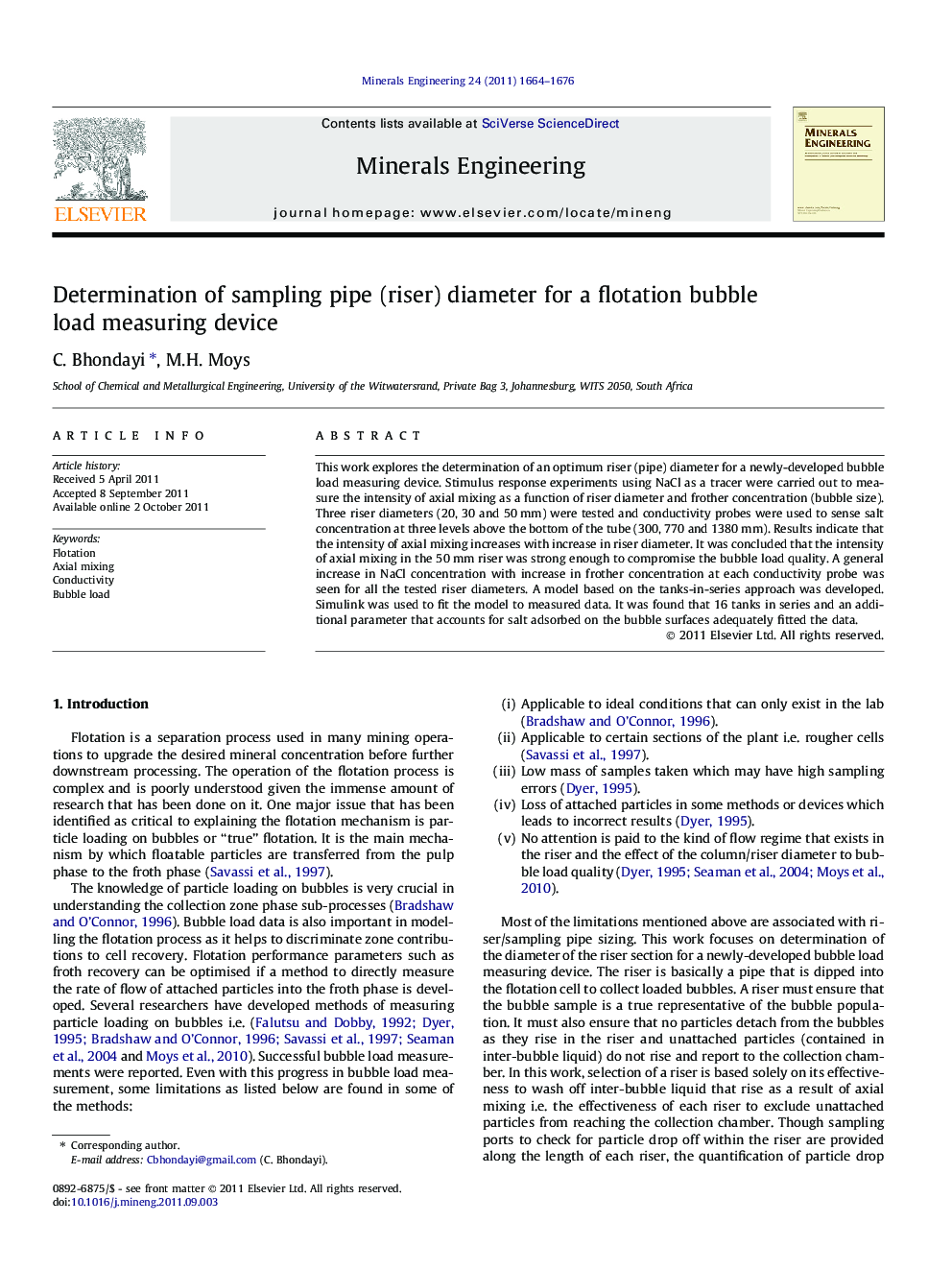| Article ID | Journal | Published Year | Pages | File Type |
|---|---|---|---|---|
| 233799 | Minerals Engineering | 2011 | 13 Pages |
This work explores the determination of an optimum riser (pipe) diameter for a newly-developed bubble load measuring device. Stimulus response experiments using NaCl as a tracer were carried out to measure the intensity of axial mixing as a function of riser diameter and frother concentration (bubble size). Three riser diameters (20, 30 and 50 mm) were tested and conductivity probes were used to sense salt concentration at three levels above the bottom of the tube (300, 770 and 1380 mm). Results indicate that the intensity of axial mixing increases with increase in riser diameter. It was concluded that the intensity of axial mixing in the 50 mm riser was strong enough to compromise the bubble load quality. A general increase in NaCl concentration with increase in frother concentration at each conductivity probe was seen for all the tested riser diameters. A model based on the tanks-in-series approach was developed. Simulink was used to fit the model to measured data. It was found that 16 tanks in series and an additional parameter that accounts for salt adsorbed on the bubble surfaces adequately fitted the data.
Graphical abstractFigure optionsDownload full-size imageDownload as PowerPoint slideHighlights► In this work, a flotation bubble load measuring device is developed. ► Three riser diameters 20, 30 and 50 mm are tested for axial mixing. ► Axial mixing increased with increase in riser diameter and frother concentration. ► A tanks- in- series model which fitted experimental data well was developed. ► It was concluded that a 30 mm id riser was the best among the tested three.
